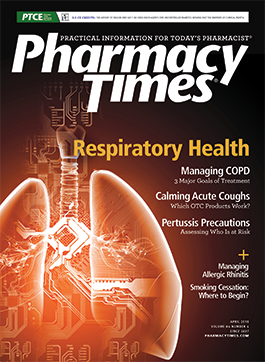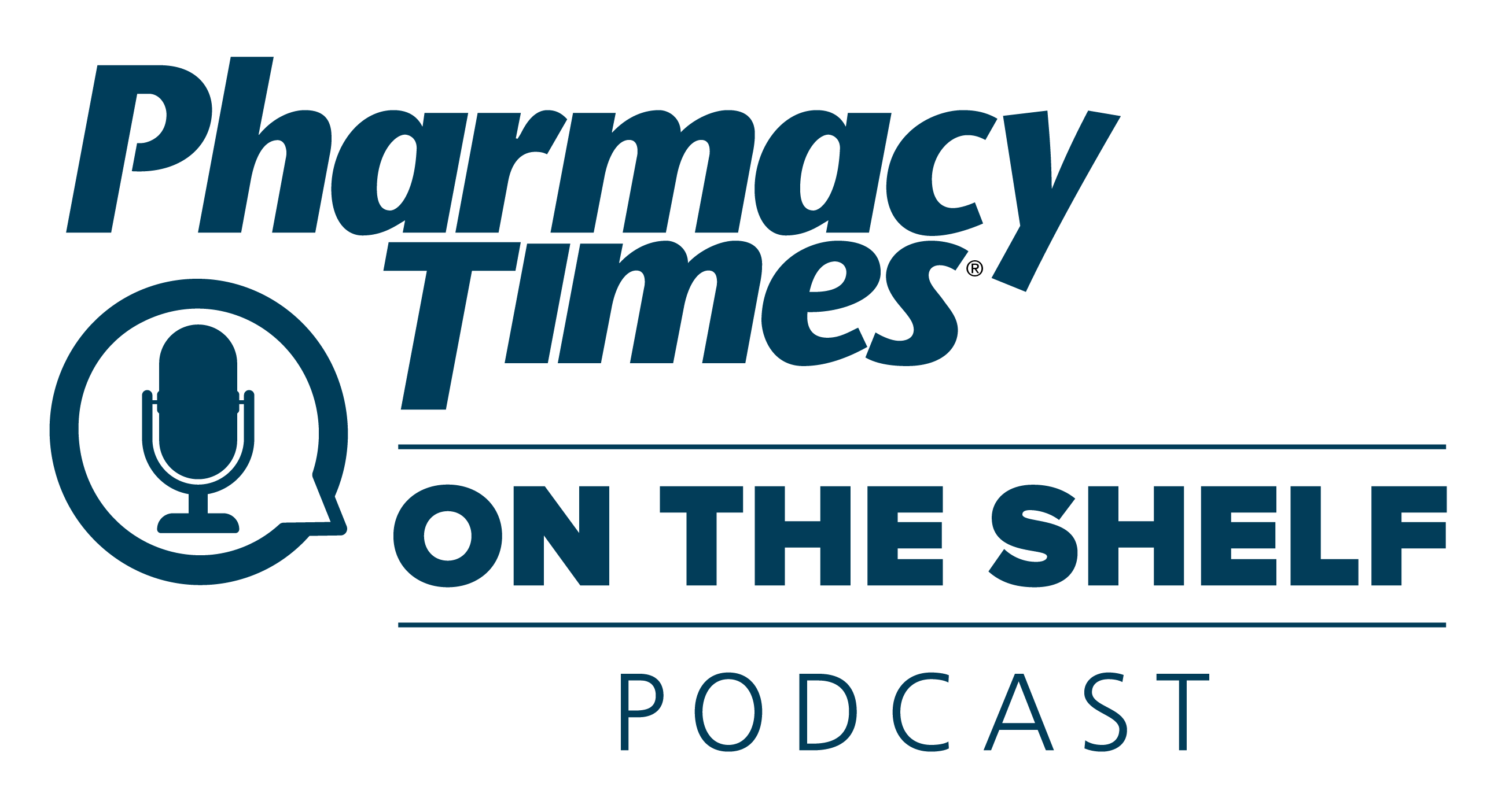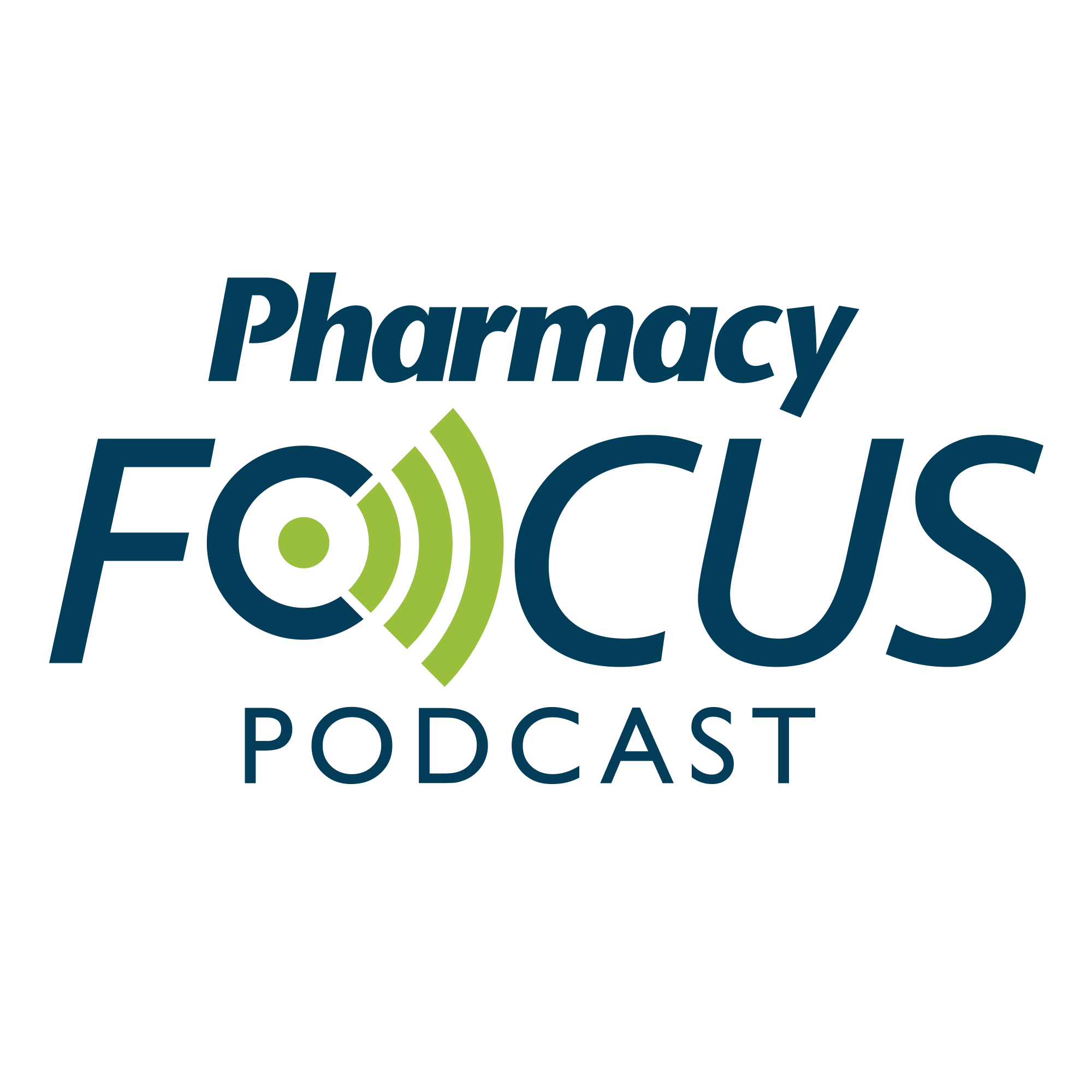Publication
Article
Pharmacy Times
Managing Allergic Rhinitis: Tips to Improve Therapeutic Selection and Symptom Control
Author(s):
Allergic rhinitis, also known as hay fever, is a common condition that causes symptoms such as congestion, nasopharyngeal itching, rhinorrhea, and sneezing.
Allergic rhinitis, also known as hay fever, is a common condition that causes symptoms such as congestion, nasopharyngeal itching, rhinorrhea, and sneezing. Ocular manifestations, such as itching, redness, and tearing, may also be present.1 It is 1 of the leading immunologic health conditions worldwide affecting an estimated 1 in 7 Americans.2
Over the past few years, numerous medications that were once available only by prescription have become available over the counter. Although many patients manage allergic rhinitis symptoms independently, many are not satisfied with their medications.3-6 Several classes of medications, including decongestants, intranasal antihistamines, intranasal corticosteroids, leukotriene antagonists, mast cell stabilizers, and nonsedating oral H1-antihistamines, are all part of the armamentarium of therapeutic options.
Here are a few tips to consider when selecting therapy during the upcoming allergy season:
Prior to selecting therapy, differentiate allergic from nonallergic rhinitis subtypes. The term “rhinitis” refers to inflammation of the mucous membranes lining the nasal passages. Inflammation may have nonallergic causes, such as anatomic abnormalities, hormonal fluctuations, infections, and exposure to triggers such as cold dry air and spicy foods (aka vasomotor). Allergic rhinitis is associated with the antibody immunoglobulin E, an important mediator associated with allergic inflammation. Epidemiological studies estimate a 3:1 ratio of allergic to pure nonallergic rhinitis.1,7,8 These subtypes can coexist with an estimated 44% to 87% of patients having mixed rhinitis, which may complicate treatment.1 Differentiating between the subtypes is essential to ensure appropriate therapy.9
Consider symptom pattern, potential precipitating factors, and severity. Although there is no accepted method of grading rhinitis severity, symptoms may be described as “moderate to severe” in patients who experience at least 1 of the following: difficulty performing daily activities, impaired learning or productivity at school or work, sleep disturbance, or troublesome symptoms.10 Total nasal symptom scores measure congestion and itching, sneezing, and rhinorrhea. Other validated instruments, such as the Mini-Rhinitis Quality of Life Questionnaire and the Rhinitis Control Assessment Test, can help objectively measure baseline symptom burden and subsequent response to treatment.11,12
Patients with severe seasonal allergic rhinitis may benefit from disease-modifying therapy using specific allergen immunotherapy, either subcutaneous or sublingual.13 Controlled studies of dust mite, grass, and ragweed allergens administered over a 3-to-5-year period have demonstrated at least partial relief of symptoms.14
Regardless of severity, management decisions should always be individualized and combined with strategies to help mitigate exposure to offending allergens and triggers. For instance, seasonal allergic rhinitis is most frequently associated with outdoor allergens, such as mold and pollen. On the other hand, perennial allergic rhinitis is most commonly due to indoor allergens, such as animal dander, cockroaches, house dust mites, and mold.8 The Environmental Protection Agency and other advocacy groups, including the Asthma and Allergy Foundation of America, offer daily air quality reports, educational tools for health care providers and patients, and other helpful resources.
Ensure that treatment targets patient symptoms. Medication classes indicated for allergic rhinitis have distinct mechanisms to address symptoms, though 1 class may not cover all symptoms. Thus, it is important to solicit the patient’s specific symptoms and then further tailor therapy to
factors such as the patient’s age, comorbidities, and preferences regarding OTC drugs, such as cost and formula.
Oral H1-antihistamines competitively block the effects of histamine on targets sites and are recommended for nasopharyngeal itching, ocular manifestations, rhinorrhea, and sneezing.1,10 These drugs do not displace bound histamine, so patients should be instructed to begin treatment 1 to 2 hours before anticipated allergen exposure. These agents can be divided into 2 main categories: first generation (brompheniramine, chlorpheniramine, diphenhydramine, etc) and second generation (cetirizine, fexofenadine, levocetirizine, loratadine, etc). Second-generation antihistamines are preferred because they are peripherally selective and less likely to cross into the central nervous system and cause sedation. Among the newer, nonsedating antihistamines, no single agent has been conclusively found to be superior.1,10
Oral H1-antihistamines are not efficacious for nasal congestion, which is why most formulations are combined with a decongestant. Phenylephrine and pseudoephedrine are readily available without a prescription, though the FDA restricts the amount of pseudoephedrine for purchase because of concerns related to illicit production of methamphetamine.15 Decongestants work by targeting alpha-adrenergic receptors on vascular tissue, which causes the constriction of capillary blood vessels. This, in turn, helps reduce swelling and improves airflow within the nasal cavity. Pseudoephedrine is typically considered more effective at reducing nasal congestion than phenylephrine, which has poor oral bioavailability because it is extensively metabolized in the gut. Intranasal formulations containing oxymetazoline or phenylephrine are alternative options, but use should be limited to 5 days because of the risk of rebound vasodilation or rhinitis medicamentosa.10
Antihistamine-plus-decongestant combinations may cause insomnia and should be avoided in patients with marked coronary artery disease, narrow-angle glaucoma, severe or uncontrolled hypertension, or urinary retention or who are in the first trimester of pregnancy.14 Given the limited additive benefit and potential for adverse reactions, guideline documents recommend limiting the use of decongestants and combination products containing these agents unless specifically targeting congestion.10
Intranasal antihistamines, such as azelastine (Astepro) and olopatadine (Patanase), are available by prescription and at least equal to oral antihistamines.1,10 These agents have a more rapid onset of action and deliver higher concentrations of antihistamine locally, which yields some improvement of nasal congestion.16,17 However, intranasal antihistamines are generally less effective than intranasal corticosteroids and may cause drowsiness, dysgeusia or a bitter taste, and headachess.1,16,17
Leukotriene receptor antagonists (LTRAs), such as montelukast and zafirlukast, are available only by prescription. These agents are well tolerated, though agitation, changes in mood, and dream disturbances have been reported.18 Montelukast (Singulair) is the only option with an approved indication for allergic rhinitis, both seasonal and perennial.19 LTRAs may be considered for patients with comorbid asthma, particularly when the patient prefers not to use or cannot use an inhaled glucocorticosteroid.10
Intranasal corticosteroids are the most effective option for reducing nasal symptoms associated with allergic rhinitis, including congestion.10,13 Budesonide (Rhinocort AQ), fluticasone furoate (Flonase Sensimist), fluticasone propionate (Flonase), and triamcinolone (Nasacort) are available over the counter; ciclesonide (Omnaris), flunisolide (Nasarel), mometasone furoate (Nasonex), and options containing a hydrofluoroalkane-based propellant, such as beclomethasone (Qnasl) and ciclesonide (Zetonna), are available only by prescription. These agents are considered equally effective for nasal symptom relief. The most commonly reported adverse effects are burning, epistaxis, headaches, irritation, nasal dryness, and stinging. Additives and preservatives, such as alcohol and benzalkonium, may cause drying and epistaxis and confer an unpleasant odor or taste to the nasal formulation. Alcohol-free formulas and products that deliver the dose in a small spray volume may improve tolerability.20 As with intranasal antihistamines, septal deviation has been reported in rare instances, which underscores the importance of educating patients about proper technique.1,16,17
Intranasal ipratropium bromide (Atrovent) is indicated for the symptomatic relief of rhinorrhea associated with seasonal allergic rhinitis or nonallergic rhinitis (eg, the common cold).21 It is not beneficial for other symptoms of allergic rhinitis, so it should just be used adjunctively with other agents or nasal saline irrigation.10,14
Finally, intranasal cromolyn (NasalCrom) works by stabilizing chloride channels within the membrane of proinflammatory mast cells. This prevents the release of histamine and allows for both the prevention and treatment of nasal symptoms. Although it has an excellent safety profile, it has an inconvenient dosing schedule (3 or 4 times a day) and is generally less effective at relieving the symptoms of allergic rhinitis than other options.14,22
Conclusion
There is clearly no shortage of pharmacologic options for treating allergic rhinitis. Combining nonpharmacologic interventions, such as trigger avoidance, with strategies to individualize treatment, will help increase patient satisfaction and the chances for successful management of allergy symptoms this season.
Timothy R. Hudd, BS, PharmD, RPh, AE-C, is an associate professor of pharmacy practice at Massachusetts College of Pharmacy and Health Sciences in Boston and chair-elect of the National Asthma Educator Certification Board.
References
- Wallace DV, Dykewicz MS, Bernstein DI, et al. The diagnosis and management of rhinitis: an updated practice parameter. J Allergy Clin Immunol. 2008;122(suppl 2):S1-S84. doi: 10.1016/j.jaci.2008.06.003.
- Lang DM. Allergic rhinitis. Cleveland Clinic Center for Continuing Education website. clevelandclinicmeded.com/medicalpubs/diseasemanagement/allergy/allergic-rhinitis/#bib2. Published November 2013. Accessed February 28, 2018.
- Bousquet J, Schunemann HJ, Hellings PW, et.al. MACVIA clinical decision algorithm in adolescents and adults with allergic rhinitis. J Allergy Clin Immunol. 2016;138(2):367-374.e2. doi: 10.1016/j.jaci.2016.03.025.
- Meltzer EO. The prevalence and medical and economic impact of allergic rhinitis in the United States. J Allergy Clin Immunol. 1997;99(6 Pt 2):S805-828.
- Allergies in America: a landmark survey of nasal allergy sufferers: adult. World Allergy Organization website. worldallergy.org/UserFiles/file/Allergies%20in%20America%20(AIA)%20-%20Adult%20Executive%20Summary.pdf. Accessed March 14, 2018.
- Carr WW, Yawn BP. Management of allergic rhinitis in the era of effective over-the-counter treatments. Postgrad Med. 2017;129(6);572-580. doi: 10.1080/00325481.2017.1333384.
- Bousquet J, van Cauwenberge P, Khaltaev N, et al. Allergic Rhinitis and its Impact on Asthma (ARIA) in collaboration with the World Health Organization. Allergy. 2002;57:841-855.
- Bousquet J, Khaltaey N, Cruz AA, et al; World Health Organization, GA(2)LEN, AllerGen. Allergic rhinitis and its Impact on Asthma (ARIA) 2008 update (in collaboration with the World Health Organization, GA(2)LEN and AllerGen). Allergy. 2008;63(suppl 86):8-160. doi: 10.1111/j.1398-9995.2007.01620.x.
- Wheeler PW, Wheeler SF. Vasomotor Rhinitis. Am Fam Physician. 2005;72:1057-62.
- Brożek JL, Bousquet J, Baena-Cagnani CE, et al; Global Allery and Asthma European Network, Grading of Recommendations Assessment, Development and Evaluation Working Group. Allergic Rhinitis and its Impact on Asthma (ARIA) guidelines: 2010 revision. J Allergy Clin Immunol. 2010;126(3):466-476. doi: 10.1016/j.jaci.2010.06.047.
- Schatz M, Meltzer EO, Nathan R, et al. Psychometric validation of the rhinitis control assessment test: a brief patient-completed instrument for evaluating rhinitis symptom control. Ann Allergy Asthma Immunol. 2010;104(2):118-124. doi: 10.1016/j.anai.2009.11.063.
- Schatz M, Zeiger RS, Chen W, Yang SJ, Stanford RH, Garris CP. A comparison of the psychometric properties of the Mini-Rhinitis Quality of Life Questionnaire and the Rhinitis Control Assessment Test. Am J Rhinol Allergy. 2012;26(2):127-133. doi: 10.2500/ajra.2012.26.3744.
- Wallace DV, Dykewicz MS, Oppenheimer J, Portnoy JM, Lang DM. Pharmacologic treatment of seasonal allergic rhinitis: synopsis of guidance from the 2017 Joint Task Force on Practice Parameters. Ann Intern Med. 2017;167:876-881. doi: 10.7326/M17-2203.
- Boyce A, Austen K. Allergies, anaphylaxis, and systemic mastocytosis. In: Kasper D, Fauci A, Hauser S, Longo D, Jameson J, Loscalzo J. eds. Harrison’s Principles of Internal Medicine. 19th ed. New York, NY: McGraw-Hill Education Medical; 2015.
- Implementation of the comprehensive Methamphetamine Control Act of 1996; regulation of pseudoephedrine, phenylpropanolamine, and combination ephedrine drug products and reports of certain transactions to nonregulated persons. Fed Regist. 1997;62(194):52294-52304. To be codified at 21 CFR §1300, 1309, 1310.
- Astepro (azelastine hydrochloride) nasal spray [prescribing information]. Somerset, NJ: Meda Pharmaceuticals Inc; 2009. www.accessdata.fda.gov/drugsatfda_docs/label/2009/022371lbl.pdf. Accessed March 14, 2018.
- Patanase (olopatadine hydrochloride) Nasal Spray [prescribing information]. Fort Worth, TX: Alcon Laboratories Inc; 2009. www.accessdata.fda.gov/drugsatfda_docs/label/2009/021861s002lbl.pdf. Accessed March 14, 2018.
- Updated information on leukotriene inhibitors: montelukast (marketed as Singulair), zarfirlukast (marketed as Accolate), and zileuton (marketed as Zyflo and Zyflo CR). FDA website. wayback.archive-it.org/7993/20171114124744/https://www.fda.gov/Drugs/DrugSafety/PostmarketDrugSafetyInformationforPatientsandProviders/DrugSafetyInformationforHeathcareProfessionals/ucm165489.htm. Published August 28, 2009. Accessed February 28, 2018.
- Singulair (montelukast sodium) [prescribing information]. Whitehouse Station, NJ: Merck and Co, Inc; 2016. merck.com/product/usa/pi_circulars/s/singulair/singulair_pi.pdf. Accessed March 14, 2018.
- Meltzer EO. Formulation considerations of intranasal corticosteroids for the treatment of allergic rhinitis. Ann Allergy Asthma Immunol. 2007;98(1):12-21. doi: 10.1016/S1081-1206(10)60854-X.
- Atrovent (ipratropium bromide HFA) Inhalation Aerosol [prescribing information]. Ridgefield, CT: Boehringer Ingelheim International GmbH; 2012. docs.boehringer-ingelheim.com/Prescribing%20Information/PIs/Atrovent%20HFA/10003001_US_1.pdf. Accessed March 14, 2018.
- Nasalcrom. RxList website. rxlist.com/nasalcrom-drug.htm#description. Updated February 17, 2017. Accessed March 14, 2018.


FDA Approves Dupilumab, Marking First Targeted Therapy in a Decade for Chronic Spontaneous Urticaria





